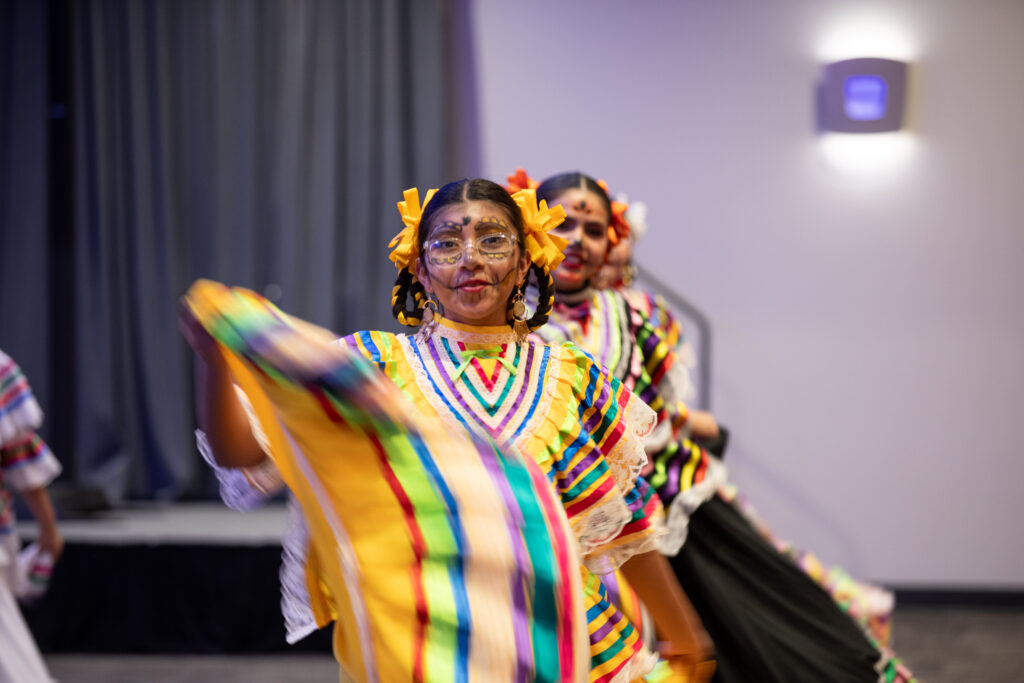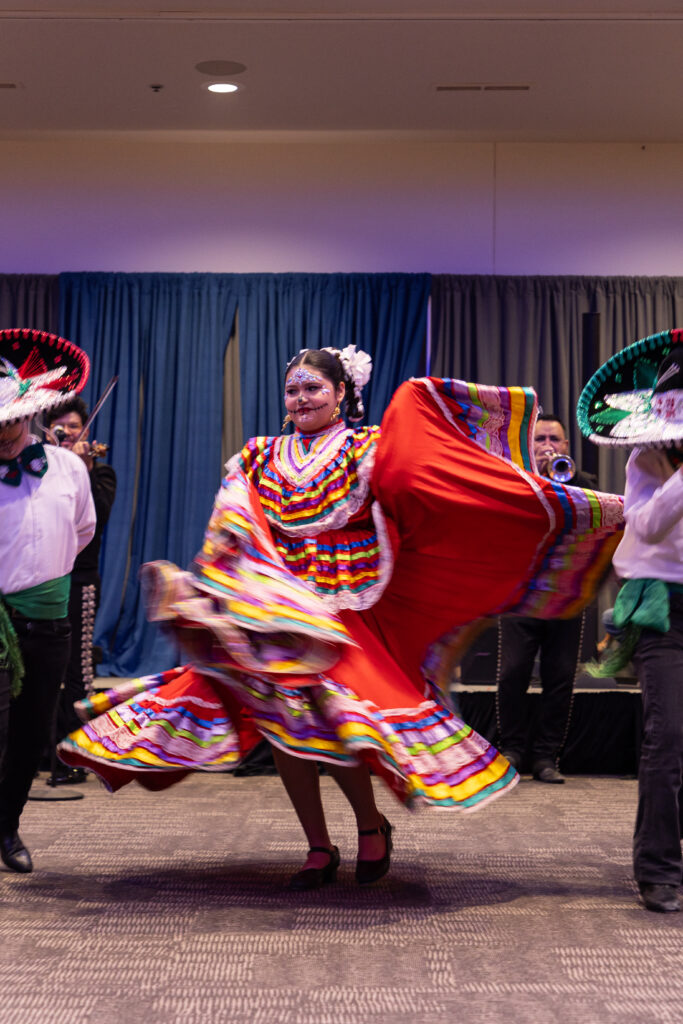


ENO SULE/THE CREIGHTONIAN
During the Día de Los Muertos celebration, Creighton students, staff and other Omaha community members experienced multiple cultural performances and dances commemorating the holiday.
The Creighton Intercultural Center (CIC), Campus Ministry and other local businesses and participants came together in the Skutt Ballroom to celebrate Día de Los Muertos last weekend. Día de Los Muertos, otherwise known as The Day of the Dead,” is about more than just extravagant festivities and authentic food. Across Latino cultures, the holiday is celebrated annually from Oct. 31 to Nov. 2, incorporating a vast array of Hispanic identity and traditions into numerous jubilant activities as a means of remembrance for those who have died.
“Día de Los Muertos is a day in which families honor their loved ones, and it really involves a celebration of their lives,” Mario Alejandre, the director of the Creighton Interculture Center (CIC), said. “It’s really just a reminder that life is a gift, and there is a real joy in remembering the people in your life who have passed.”
According to ancient traditions, the gates of Heaven open on Halloween night, allowing spirits of the deceased to rejoin their families in the revelries for the remaining hours. Although its origin is primarily rooted in pre-Hispanic Aztec practices, elements from common Dia de Los Muertos rituals were mixed with Roman Catholic influence after the Catholic Church designated November 1 and 2 as All Saints and All Souls Day in the 16th century.
Over time, different regions have adopted their own distinct practices, such as decorating graves, sharing stories or wearing skull masks, but the overall essence of the holiday has remained the same: to cultivate vibrant and uplifting energies, focusing on joy and the spirit of life, instead of the grief and pain from loss.
This liveliness was directly observed last Saturday when Creighton students and members of the Omaha community came together to experience all that the event had to offer. From dancers and a live mariachi band to face-painting and decorating candy skulls, Alejandre explained that each interactive element “is part of a more rich and vibrant cultural expression” of the different ways in which Día de Los Muertos is celebrated amongst people of Latino cultures.
Participants were also able to make paper marigolds, a common flower used for decoration during Día de Los Muertos. This is because many people believe that their bright colors and strong scent guide spirits of the deceased back to Earth towards their ofrendas (alters), which are used to honor loved ones.
In fact, prior to the event, people were encouraged to submit photos of their deceased family or friends to display on the community ofrenda, which was further adorned with candles, marigolds and skulls, enabling families to directly engage with the festivities.
“I just had one individual come up [to me] crying … and [she] just expressed how much this event meant to her,” Alejandre said. “It’s been a real gift to see that [the impact of the event] in person.”
In addition to the deep ethnic significance of Día de Los Muertos, the function also served as a learning opportunity for those unfamiliar with all its varying traditions.
“Everything I’ve learned before has been from a textbook or lecture. Through participating in this you can actually see the celebrations and actually experience it.” Addy Gregoire, a sophomore in the College of Arts and Sciences who volunteered at the event, said. “I think it [learning about other cultures] adds more to life, because every culture does so many different things differently, and this has allowed me to have a fuller understanding of it all. …Overall, it affects how I look at my life!”
College of Arts and Sciences freshman Angel Garcia echoed these claims.
“I think it is important to learn about different cultures because we get to understand each other more. And I think it’s important to not just be stuck in a bubble and….appreciate everyone’s differences,” Garcia said.
This was one of the primary reasons for hosting the event on campus and bridged not only the gap between the Latino community here at Creighton and in Omaha, but also between students of different cultures and faiths.
“I think it is really a chance to see that in every culture we have ways in which we honor and remember the dead,” Alejandre said. “And so, my hope is that being able to experience…all of the celebratory pieces, that there is something that really humanizes us, and we can see that, even interculturally, we have much more in common than we realize.”